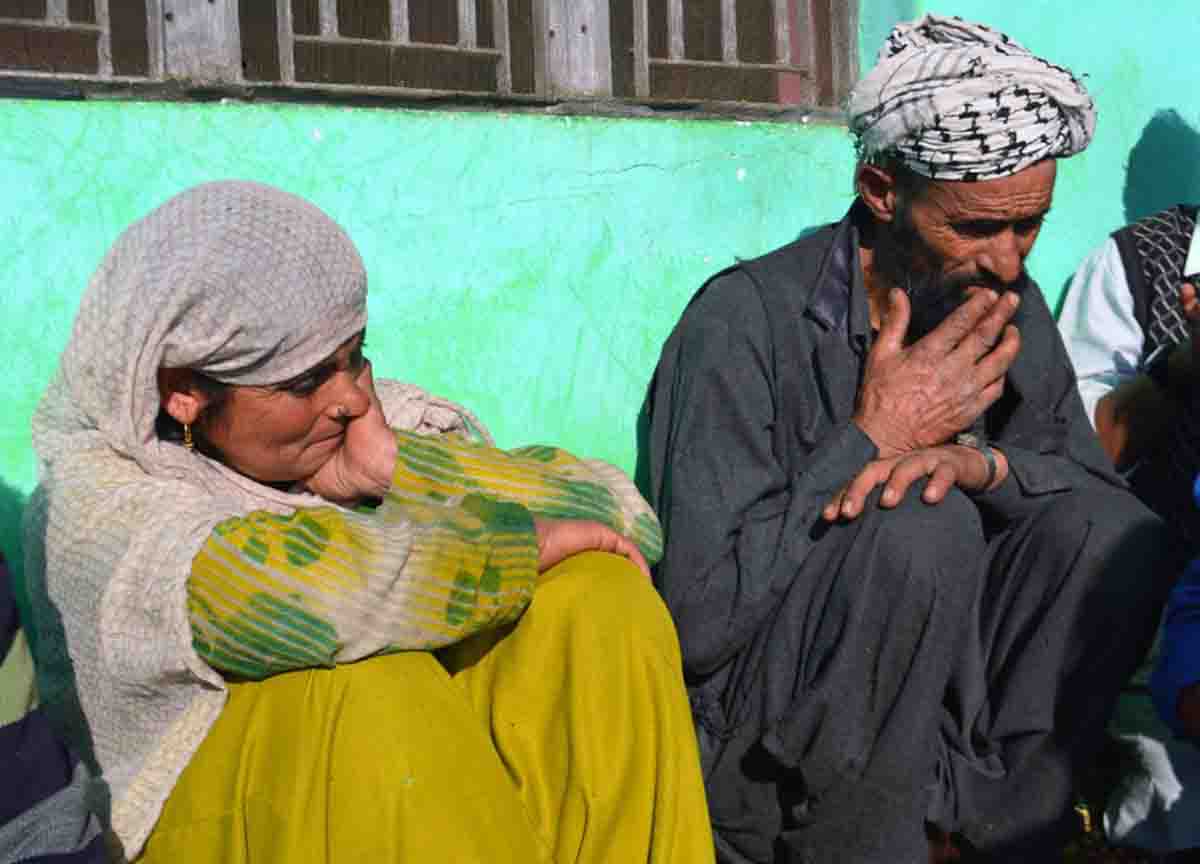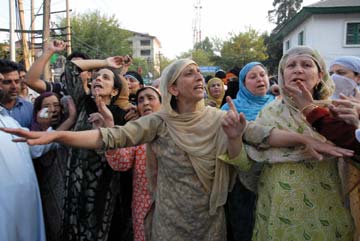From the fall of the Kashmir’s first woman ruler in last one millennium to a spate of serious crimes being committed against women, the year 2018 was no different for Kashmir’s half of the population, reports Saima Bhat

It was exactly after 12 years on December 30, 2017, when a district court in Srinagar sentenced a convict, Farooq Ahmad Pinzoo (FIR 180 of 2005 for rape and murder) to death for raping, murdering and then dumping a six-year-old girl in Mehjoor Nagar area of Srinagar.
The second additional sessions Judge Srinagar, Tahir Khurshid Raina, termed the case as “rarest of rare” and passed the judgment. “He shall be hanged till death.” But nobody had the premonition that around the same time, a conspiracy of another brutal kidnapping, gang-rape and murder case was being hatched, far away in Jammu.
When Jammu was busy celebrating the Lohri, a festival welcoming the new season, outside a local temple in Rasana where celebrations were going on, a minor, eight-years-old Bakerwal girl was being raped just a few yards away from the temple for one last time before getting killed. It took the larger society at least three months to wake up and demand justice for her.
But the Police’s Crime Branch did a commendable job and presented a charge sheet in time after which the formal proceedings started in April. The case compelled centre to approve the death penalty for the rapists of children below the age of 12, and afterwards, the then Chief Minister Mehbooba Mufti also initiated a similar ordinance.
The case, eventually, triggered cracks in the PDPBJP coalition, and ultimately, it saw its fall in May, ending the term of Mehbooba Mufti only after two years of heading the state. She had the privilege of being called Kashmir’s first female chief minister in almost a millennium, the first after Kota Rani.
Before her fall, she had passed an order under which the state government abolished stamp duty for land and real estate purchases by the females and the decision had a positive change on the ground under which people preferred to have their properties registered under the names of women in their families.
That was not 2018 for women; Kashmir’s half of the population. The year witnessed a new trend in the funerals of slain militants and civilians where women participating in huge numbers. Some were even offering funeral prayers, a rarity in itself. Earlier this year, even a sister of a militant received a bullet when she came to an encounter site in Chaigund (January 24) after hearing that her brother was caught in the encounter. She died after battling for her life for 18 days in the SKIMS intensive care. After Saima, Khusboo Jan also was shot dead, when she heard her cousin, a civilian, was shot dead outside their house in Kulgam.
During the year, a series of videos went viral on social media that suggested the participation of women in the conflict. A few mothers used social media to make appeals to militants to send their wards back from the militant fold. It succeeded in at least three cases.
At the same time, a few audio messages featured mothers endorsing the path chosen by their sons. During the last phone calls to their families, a few mothers put a bold face and appreciated the roles of their sons-to-be killed. On her son’s funeral, the militants gave a gun to Saddam Padder’s mother to give him a gun salute. Later a woman, Shameema was killed by militants, allegedly for being an informer and getting militants killed.
Though the moral police has been part of the society for a long time, a sleaze racket was blown by police. When the ‘victim’ started talking, she mentioned names of cops and a sitting lawmaker. All of a sudden, the screen of investigations went blank.
Later, when a young lady was caught attempting to get in a Srinagar local hotel for a night sojourn with an army major, Major Leetul Gogoi, the opposition issued a bank cheque to her to help fight the situation in which her family was living. Later, a local court found Gogoi guilty of “fraternizing with a woman source against existing orders” and “leaving his unit post in an operational area without permission.”
An interesting trend was witnessed in mid-July when a mass marriage of around 150 brides and grooms was solemnised in Srinagar. It was the first mass wedding in Kashmir, and after that, another mass wedding of around 50 people was solemnised in Budgam district with the help of a local NGO Aash. The group is reportedly going to hold another mass wedding, but this time for the couples in the old city.
The institution of marriage in Kashmir has been transformed from the occasion of celebrations to a liability generation event and a statement about social status. And as a result of which many girls in the marriageable age are not able to get married.
Srinagar tops the number of unmarried women with 51.33 per cent yet to be married. This is followed by Budgam with 46.46 per cent women not married in the 20-34 age group. By and large, all the Kashmir districts including the arid Ladakh desert reflect the same trend. Despite the twin mass marriages, the trend has not actually taken off.
The crime rate against women, however, did not ebb. Up to October 2018, a total of 847 rape cases were reported across the state. Besides, two cases of gang rapes, 2997 cases of kidnapping and abduction of women/girls, 5596 cases of molestation, 1057 cases of eve teasing, 50 cases of dowry deaths, 336 cases of suicide, 1320 cases of cruelty by husband, 20 cases of dowry act and 22 cases of trafficking cases, were also registered. In Kashmir division, the crime rate is maximum in Srinagar district with 2605 cases registered so far. (box-Kashmir division data)
As the state was trying to forget the Rasana girl, a much heinous case of rape and murder of a minor girl gave sleepless nights to people. Reported from Uri, this case involved a step-mother and half-brother.
It was November 2018, when a mentally ‘unsound’ unmarried girl gave birth to a dead foetus on the roads of Ganderbal district. The case which is said to be a gang rape by unknown people around a Shrine in Srinagar reached High Court where luckily the first female chief justice of J&K Geeta Mittal took the suo moto cognisance of the matter and directed the police to complete the enquiry within the specific time.
In the political sphere, women played an active role in the much-hyped Municipal and Panchayat elections. For the first time, women representation reached 25 in SMC.

In the unionist camp, Safina Beig, the second wife of PDP patron Muzaffar Beig also joined politics formally. She is reportedly going to contest from Sangarma, a seat left vacant by Basharat Bukhari, who joined NC.
By the end of the year, the governor before completing his term in State gave a moment to cherish the working ladies when he passed an order saying sexual exploitation of women is now a criminal offence in J&K. The state administrative council (SAC) headed by governor approved the Prevention of Corruption (Amendment) Bill, 2018, and the Jammu and Kashmir Criminal Laws (Amendment) Bill, 2018.
“The Bill seeks to amend the state Ranbir Penal Code (RPC) whereby specific offence under Section 354E is being inserted to provide for the offence of ‘Sextortion’.
The year ended by making an Indonesian woman a widow. After an encounter in Sirnoo Pulwama, seven civilians were killed. These included the young husband of the Indonesian lady. “My husband told me that he’ll show me heaven, but this heaven place took him away,” she was quoted saying. The lady, along with her three-month-old daughter, is now flying home to live with her parents.















